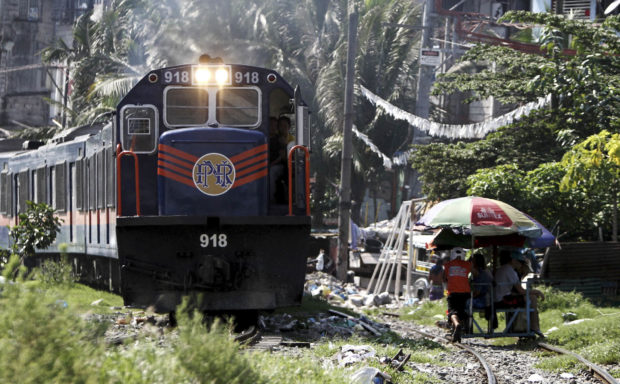
PNR trains, like this, would soon carry cargo to ease congestion at Manila’s ports. —RICHARD A. REYES
Even before the Philippines became an independent republic, it already had a rail system that made trains a regular fixture in the streets of Manila, chugging along and carrying goods and passengers to and from La Union in the north and Legazpi City in the south.
It was the rail system’s heyday. The Manila Railroad Co., later to be known as Philippine National Railways (PNR), had 1,000 kilometers of rail spanning the entire Luzon.
125 years of war, neglect
But in the last 125 years, the PNR has become just a shadow of its old self, suffering from the ravages of war and government neglect which limited its operations to just 28 km of tracks.
Despite having all the reasons to be pessimistic, though, PNR General Manager Junn Magno sees a bright future for the country’s oldest train system as ridership continued to grow.
Just last year, Magno said 65,000 passengers took the PNR daily from an average of just 32,000 in 2016. The number of passengers was projected to grow to 150,000 a day in three years with more trains being bought.
There are currently at least seven trains operating daily. Four would be in operation in the coming weeks after repairs on their air conditioning units.
In January, the PNR bought two diesel-electric trains for P485 million from the Indonesian government, its first purchase of trains in 40 years after relying on either donated or loaned trains.
Magno said within the year the PNR would buy nine more trains.
Easing port congestion
Within the year, too, the PNR would revive freight service to not only ease port congestion but also traffic on Roxas Boulevard, where cargo trucks often pass.
The PNR freight service, to be in partnership with Metro Pacific Investments Corp., would reduce container traffic in Manila by up to 70 percent in three years.
Six 30-wagon trains would be deployed to carry cargo every night which could remove up to 3,000 trucks passing through Roxas Boulevard daily.